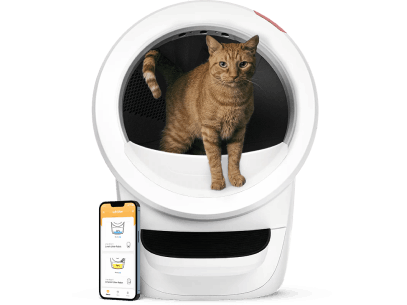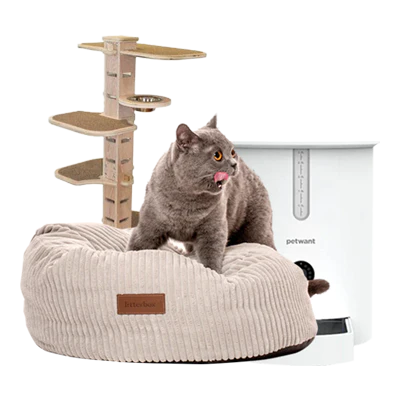Owning a cat is one of life’s great joys, but it’s also a big responsibility. Whether you're a first-time cat parent, preparing to adopt, or simply upgrading your litter game, this guide walks you through every stage of the journey. From essential setup and daily care routines to choosing the perfect feline companion, we’ve compiled everything into one purr-fect place.
This comprehensive guide pulls together the best advice from our most-loved resources:
Let’s dive into everything you need to know.
1. Before You Bring a Cat Home: Are You Ready?
Before the cuddles come the commitments. Owning a cat means years of feeding, grooming, cleaning, vet visits, and play. It’s rewarding but not always easy.
In our 10 Essential Things to Know Before Owning a Cat, we break down the key considerations:
-
Time and financial commitments
-
Breed and temperament suitability
-
Your home environment
-
Essential supplies and safety prep
Bonus: Use our expense table and checklist to get crystal-clear on budgeting before adoption day.
2. Finding Your Feline Match: Choosing the Right Cat
Your cat’s age, temperament, and breed can shape your entire experience. Whether you’re adopting or buying from a breeder, choosing the right fit is crucial.
Read How to Choose the Perfect Cat for Adoption to explore:
-
Best breeds for families, allergy sufferers, and apartment dwellers
-
Kitten vs adult cat considerations
-
How adoption agencies assess compatibility
-
What to expect from the adoption process (fees, home visits, paperwork)
Key tip: Lifestyle compatibility matters more than looks. Choose based on energy levels, grooming needs, and behaviour, not just the fluffiest face.
3. Kitten Essentials: What to Buy, Set Up, and Expect
Welcoming a kitten? They’re adorable, chaotic, and need more care than many realise.
Our Ultimate Kitten Checklist covers:
-
What to buy before pickup (food, litter, toys, etc.)
-
Setting up a “safe room” for the first few weeks
-
First vet visit tips
-
Socialisation, toilet training, and safe playtime
We’ve also included checklists by room and by age, so you’ll never be caught off guard by a growth spurt or a climbing phase.
4. Building the Purr-fect Routine: Daily Care for a Happy Cat
Cats thrive on consistency. A well-structured daily routine not only meets their physical needs, but also supports mental and emotional wellbeing.
Check out How to Create a Cat Care Routine That Keeps Your Feline Happy and Healthy to learn how to structure:
-
Feeding schedules by age
-
Daily play and enrichment activities
-
Grooming routines (yes, even for short-haired cats)
-
Litter box maintenance
-
Health monitoring habits (weight, appetite, coat, litter use)
For busy cat parents: We’ve included sample AM/PM care schedules to make it simple.
5. Litter Matters: Choosing the Right Litter Box Setup
Did you know litter box avoidance is one of the most common reasons cats are surrendered to shelters? Getting this right can make or break your relationship with your cat.
Our expert-backed Guide to Choosing the Best Cat Litter Box explores:
-
Covered vs uncovered vs top-entry boxes
-
What size is right for your cat (and why it matters)
-
Best designs for multi-cat households
-
How to reduce odour, litter tracking, and cleaning time
-
When to consider automatic/self-cleaning boxes like the Litter-Robot®
Plus: learn how to interpret your cat’s litter habits and how to fix common problems.
6. Bonus: Vet Care, Grooming and Behaviour Tips
Across all guides, we emphasise proactive, preventative care. Here’s a summary of expert advice to bookmark:
🩺 Vet Care Essentials
-
Annual check-ups and vaccinations
-
Parasite prevention (fleas, ticks, worms)
-
Dental care routines
-
When to desex (spay/neuter)
🪮 Grooming Tips
-
Brush short-haired cats 2–3x/week; long-haired cats daily
-
Trim nails every 2–3 weeks
-
Bathing is rare, stick to cat-safe wipes if needed
🧠 Behaviour Basics
-
Scratching is normal, redirect, don’t punish
-
Litter box problems often signal stress or health issues
-
Use vertical spaces, hideaways, and toys to prevent boredom
Final Thoughts: You’ve Got This
Whether you’re starting with a kitten, adopting a rescue, or upgrading your setup with a Litter-Robot®, this guide gives you the foundation to create a calm, clean, cat-friendly home. With preparation, patience, and a good scoop of love, cat ownership can be one of the most joyful parts of your life.
Explore more expert articles:
Frequently Asked Questions
It depends on your lifestyle. Kittens require time, training, and patience, while adult cats are often already litter-trained and more predictable in personality. Senior cats can be deeply affectionate and grateful companions but may come with health needs. Choose based on the time, care, and energy you can consistently offer.
Start by assessing your home environment, family dynamics, and daily routine. Active breeds like Bengals need stimulation and space, while more relaxed breeds like Ragdolls are perfect for quieter homes. Always consider grooming needs, temperament, and energy level before making a decision.
The general rule is one litter box per cat, plus one extra (unless you have a Litter-Robot!). This prevents territorial disputes and ensures access in multi-level or multi-cat homes. For example, two cats should ideally have three boxes in different quiet, low-traffic areas.
Focus on comfort, safety, and stimulation. Provide scratching surfaces, vertical climbing spaces (like shelves or cat trees), cosy resting spots, and interactive toys. Cats thrive in environments that cater to their natural behaviours—exploring, hunting, hiding, and observing.
Common missteps include choosing the wrong litter box size, neglecting regular grooming or vet check-ups, and underestimating the need for play and enrichment. The best prevention? Educate yourself, create a daily routine, and always observe your cat’s cues—behaviour tells you everything.












